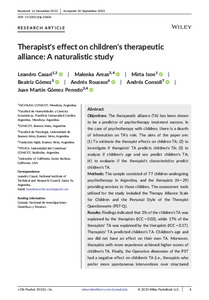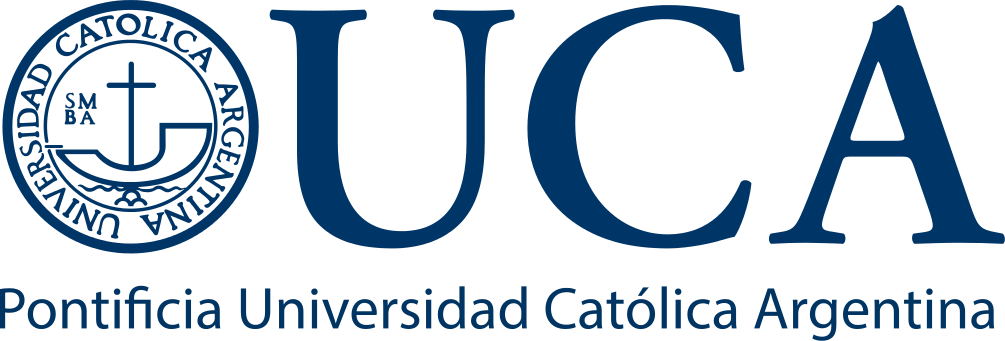Por favor, use este identificador para citar o enlazar este ítem:
https://repositorio.uca.edu.ar/handle/123456789/18224| Título: | Therapist's effect on children's therapeutic alliance : A naturalistic study | Autor: | Casari, Leandro Martín Areas, Malenka Ison, Mirta Susana Gómez, Beatriz Roussos, Andrés Consoli, Andrés Gómez Penedo, Juan Martín |
Palabras clave: | NIÑOS; PSICOTERAPIA; RELACION PACIENTE-TERAPEUTA | Fecha de publicación: | 2023 | Editorial: | Wiley | Cita: | Casari, L. M. et al. Therapist's effect on children's therapeutic alliance : A naturalistic study [en línea]. Journal of clinical psychology. 2023, 80 (1). doi: 10.1002/jclp.23606. Disponible en: https://repositorio.uca.edu.ar/handle/123456789/18224 | Resumen: | Resumen: Objectives: The therapeutic alliance (TA) has been shown to be a predictor of psychotherapy treatment success. In the case of psychotherapy with children, there is a dearth of information on TA's role. The aims of the paper are: (1) To estimate the therapist effects on children TA; (2) to investigate if therapists' TA predicts children's TA; (3) to analyze if children's age and sex predict children's TA; (4) to evaluate if the therapist's characteristics predict children's TA. Methods: The sample consisted of 77 children undergoing psychotherapy in Argentina, and the therapists (N = 29) providing services to those children. The assessment tools utilized for the study included the Therapy Alliance Scale for Children and the Personal Style of the Therapist Questionnaire (PST‐Q). Results: Findings indicated that 2% of the children'sTA was explained by the therapists (ICC = 0.02), while 17% of the therapists' TA was explained by the therapists (ICC = 0.17). Therapists' TA predicted children's TA. Children's age and sex did not have an effect on their own TA. Moreover, therapists with more experience achieved higher scores of children's TA. Finally, the Operative dimension of the PST had a negative effect on children's TA (i.e., therapists who prefer more spontaneous interventions over structured ones may experience higher levels of therapeutic alliance with child patients). Conclusion: We found a positive effect of the therapist's TA on children's TA, especially in the preference for using more spontaneous intervention techniques. We discuss the implications of the findings on the training of psychotherapists who provide services to children. | URI: | https://repositorio.uca.edu.ar/handle/123456789/18224 | ISSN: | 0021-9762 (impreso) 1097-4679 (online) |
Disciplina: | PSICOLOGIA | DOI: | 10.1002/jclp.23606 | Derechos: | Atribución-NoComercial-CompartirIgual 4.0 Internacional Acceso abierto |
Fuente: | Journal of clinical psychology. 2023, 80 (1) |
| Aparece en las colecciones: | Artículos |
Ficheros en este ítem:
| Fichero | Descripción | Tamaño | Formato | |
|---|---|---|---|---|
| therapist-effect-children.pdf | 803,64 kB | Adobe PDF |  Visualizar/Abrir |
Este ítem está sujeto a una Licencia Creative Commons

